Alai-Western Tian Shan Steppe
The ecoregion’s land area is provided in units of 1,000 hectares. The conservation target is the Global Safety Net (GSN1) area for the given ecoregion. The protection level indicates the percentage of the GSN goal that is currently protected on a scale of 0-10. N/A means data is not available at this time.
Bioregion: Tian Shan-Pamir Grasslands, Mountain Steppe & Conifer Forests (PA31)
Realm: Central Eurasia
Ecoregion Size (1000 ha):
12,780
Ecoregion ID:
721
Conservation Target:
20%
Protection Level:
3
States: Uzbekistan, Kazakhstan, Tajikistan, Turkmenistan, Kyrgyzstan
The Alai-Western Tian Shan Steppe ecoregion spreads over five countries along lowland and loess plains. There is a mixture of herbaceous and coniferous evergreen woodlands of juniper species. The northern part is an essential area for the critically endangered Saiga antelope, which forages on the foothills of the Karatau Mountain range. The Aydar-Arnasay Lake system is a critical habitat for dozens of bird species, including the endangered white-headed duck and Pallas’s sea-eagle.
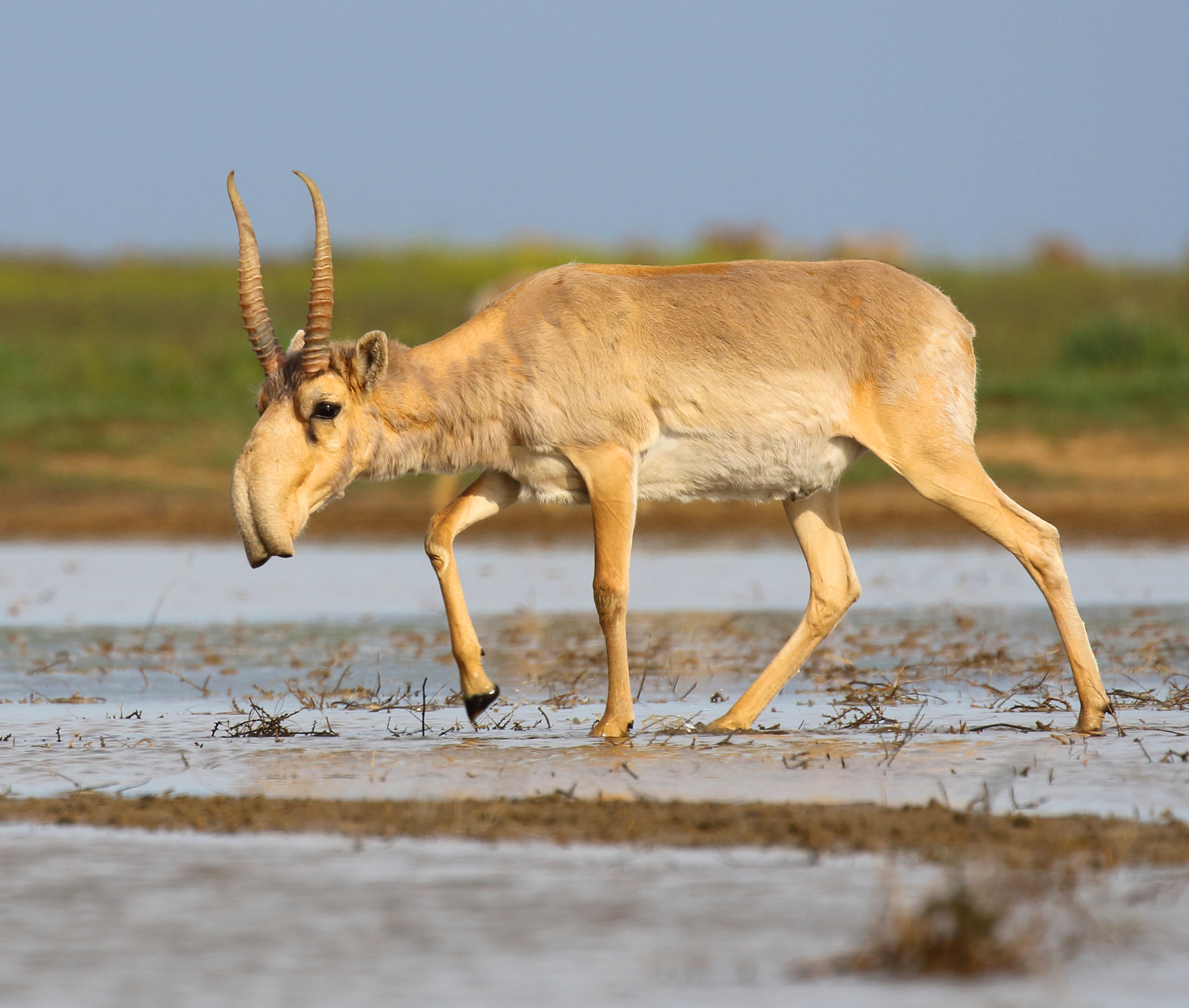
The flagship species of the Alai-Western Tian Shan Steppe ecoregion is the Saiga antelope. Image credit: Andrey Giljov, Creative Commons
The Alai-Western Tian Steppe ecoregion covers 127,805 km2, spreading over five countries. To the North, it touches the Karatau Mountain range in Kazakhstan. To the East, it encompasses the Fergana Valley mainly in Uzbekistan, reaching Tajikistan and Kyrgystan slightly at the foot of the stunning Alai mountain range. Central to this region is the extensive loess plain in Uzbekistan's Sirdaryo region. To the west, the ecoregion encompasses the Jizzakh region and the Aydar Lake. Towards the southwest is the basin of the Qashqadaryo River and the Koytendag Range, part of the Pamir-Alay mountains and Turkmenistan. The average annual temperature is 13.6°C, with a maximum average of 34.3°C and a minimum average of -8.5°C. The average rainfall is 329.4 mm/year and the climate is a mixture of arid steppe/desert and cold, as well as temperate dry and hot.
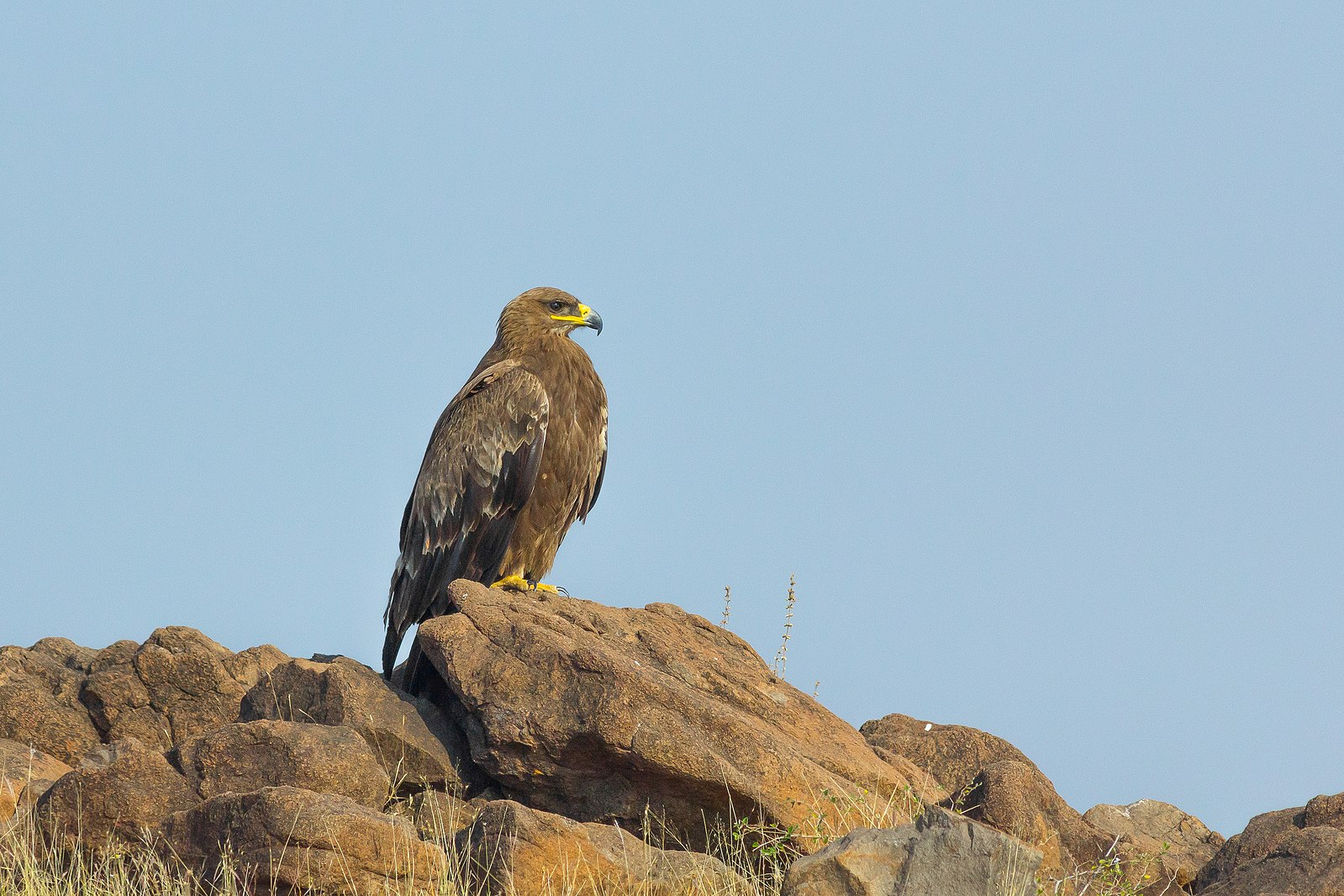
Steppe eagle. Image credit: Creative Commons
There is a variety of natural habitats in this ecoregion, although a lot of intensive and irrigated agriculture is also characteristic. The critically endangered saiga possibly migrates to the favourable foraging habitat on the foothills of the Karatau Mountains range in Kazakhstan, where the Kara Tau argali can also be found. Other threatened animals include the critically endangered sociable lapwing, the steppe eagle, the Egyptian vulture, Palla's fish-eagle, and the saker falcon. The saker falcon is often captured and illegally sold for middle-eastern falconers who prize this species for its exceptional hunting abilities.
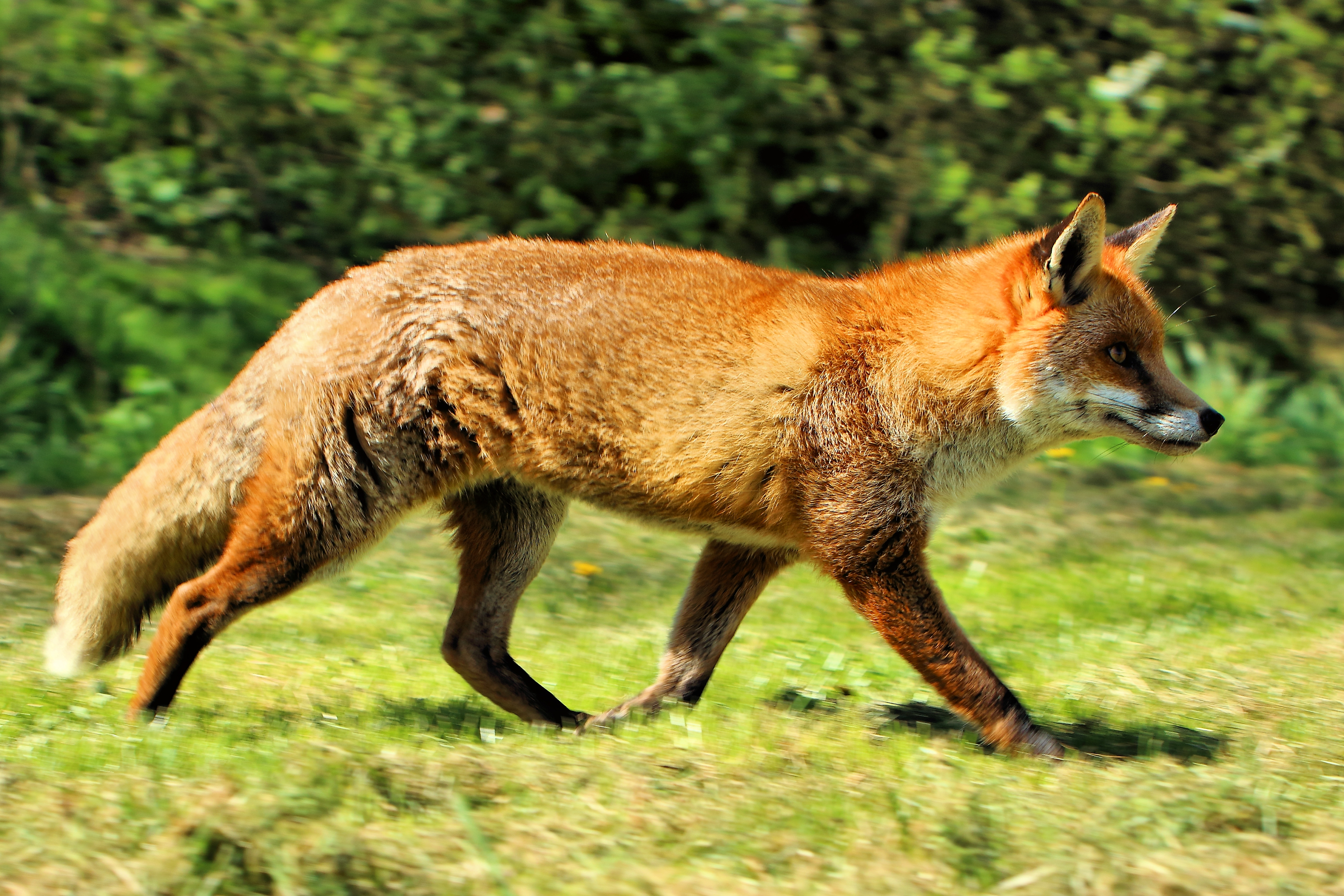
Fox. Image credit: Creative Commons
In the Fergana Valley, due to extensive land conversion for agriculture, two reptiles are particularly vulnerable: Strauch's toad and the Fergana toad-headed agamas. The Alai-western Tian Shan steppe is characterised by ephemeroid herb vegetation and coniferous evergreen woodlands of Juniperus spp., as well as unique relict fruit and nut forests. It is also a Centre of Crop Diversity, a vital area for the protection of crop wild relatives, which are essential for the maintenance of agrobiodiversity.
In general, the Alai-Western Tian Shan Steppe has several smaller formal protected areas and other areas designated as important for conservation, such as Important Bird Areas. In the Karatau Mountains range in Kazakhstan, the Karatauskiy State Nature Reserve was created to help protect the Kara Tau argali and is also part of a transnational World Heritage Site.
In Uzbekistan, the Aydar-Arnasay Lakes system is a Ramsar site as well as an Important Bird Area. It encompasses the largest reservoir in the country and consists of artificial freshwater lakes situated in the middle stream of the Syrdarya. It provides habitat for more than 100 bird species including the endangered white-headed duck, sociable lapwing, and Pallas's sea-eagle.
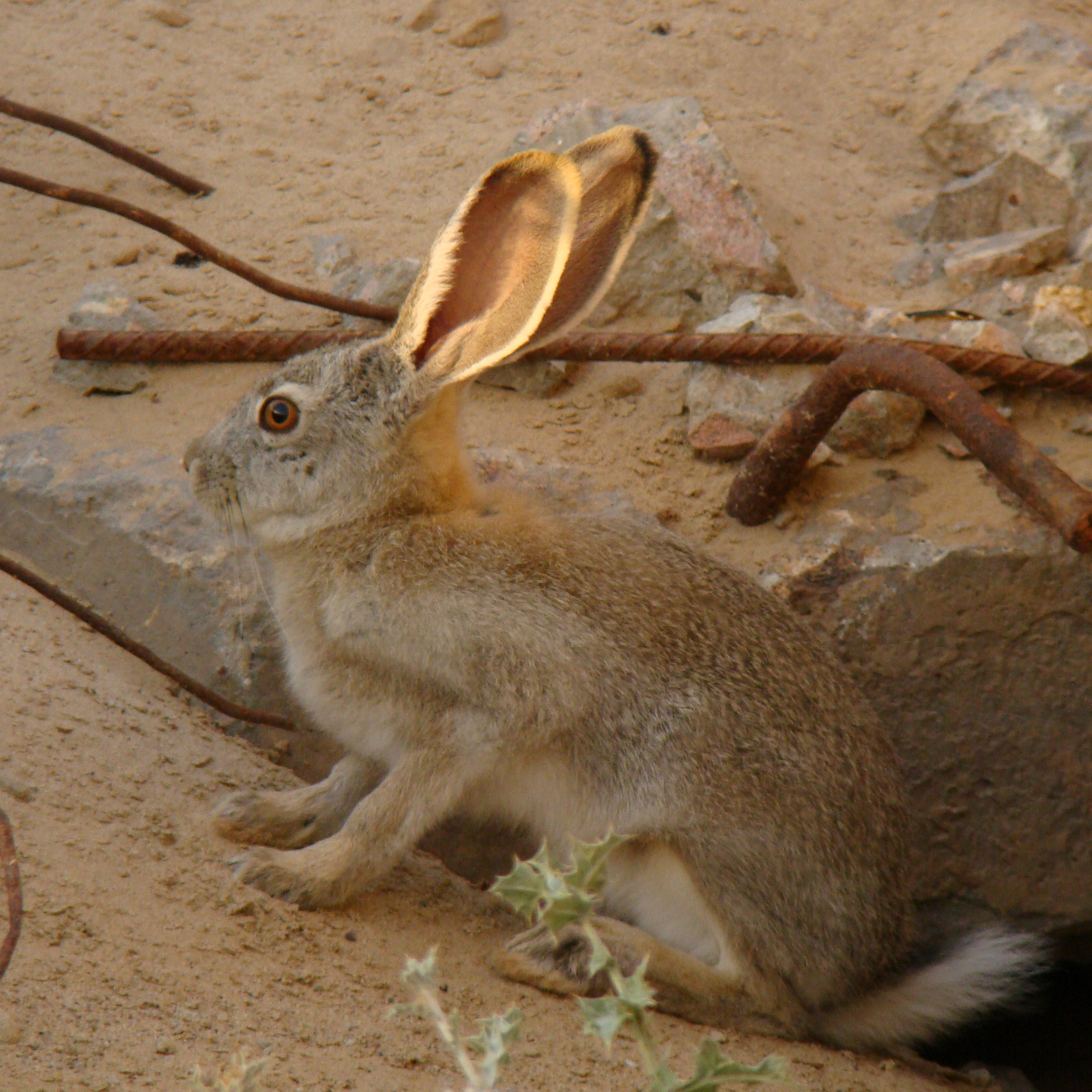
Tolai hare. Image credit: Creative Commons
Further south, there are bordering conservation areas formed by the Important Bird Areas of Talimardzhan Reservoir in Uzbekistan and Tallymerjen in Turkmenistan. The former is classified as in danger due to very high pressure from water abstraction for agriculture which prevents nesting of birds. The use of fixed nets in shallow waters is also an immense threat to birds. Overall, this ecoregion is very fragmented with intensive agricultural activities in the plains and a historical collection activity of vegetation for firewood wherever possible.
One of the most significant threats to the Alai-Western Tian Shan Steppe is the intensive agricultural activity. The demand for irrigation is very high, especially for crops like cotton. The pressure from overgrazing also leads to land degradation and loss of biodiversity, soil fertility, and vegetation cover which causes erosion and increases the chance of desertification in some regions. This activity is also affecting the existence of Crop Wild Relatives, essential for maintaining food security. Loss of habitat and fragmentation restricts species that are migratory or need large home ranges such as the saiga and the argali in the northern range of this ecoregion. These species also suffer from illegal hunting and trade in their body parts, for example to be used as traditional Chinese medicine. The goitered gazelle, which is widespread but has had its habitat reduced, is also endangered.
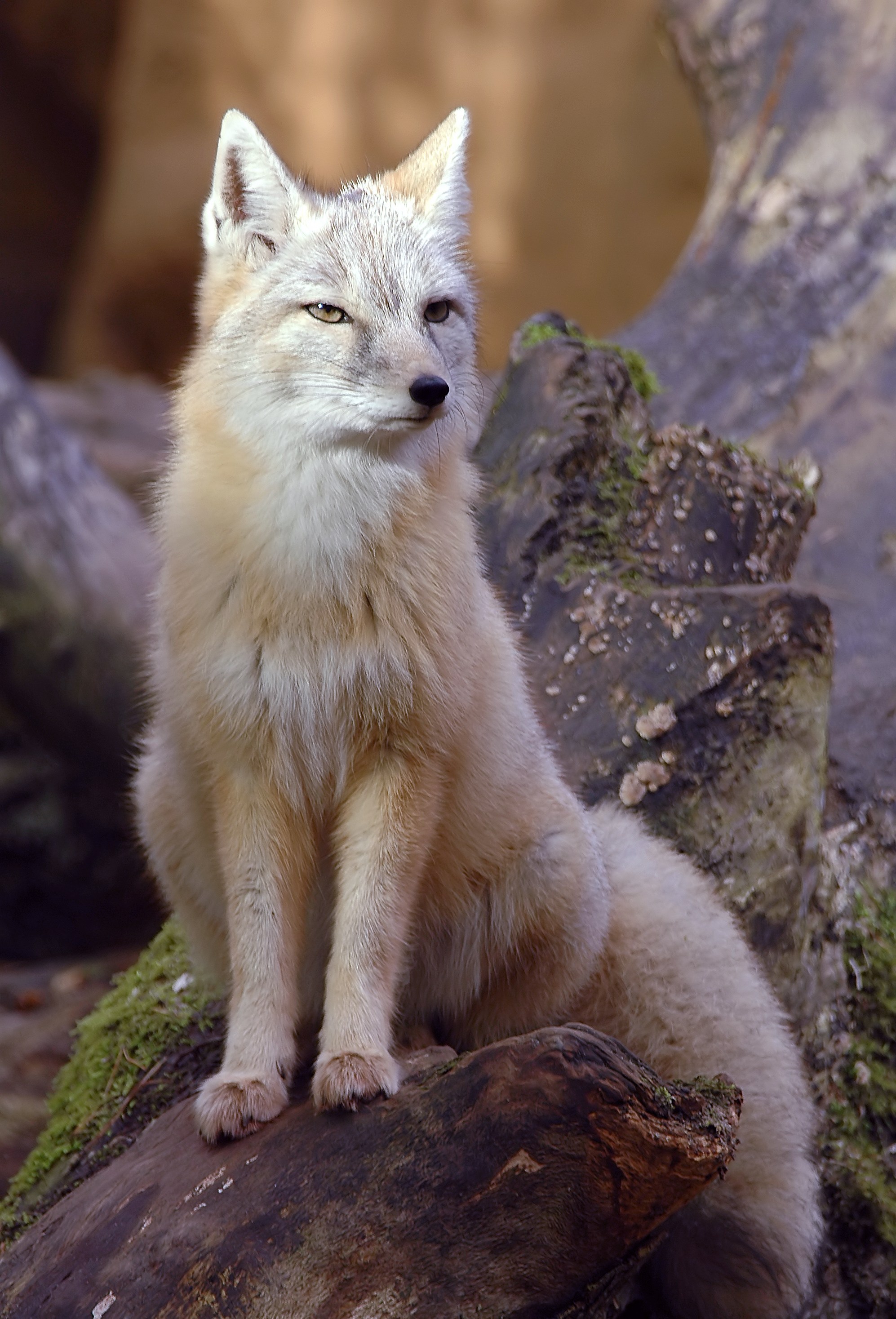
Corsac fox. Image credit: Creative Commons
The priority conservation actions for the next decade will be to: 1) strengthen the protected areas ecological networks by gazetting more protected and transboundary conservation areas; 2) support effective measures to reduce the rate of degradation and fragmentation of the most vulnerable habitats, including with multinational agreements and the financing of sustainable landscape planning and mitigation actions; and 3) enhance law enforcement against poaching and wildlife trading, and intensify public awareness campaigns regarding this issue.
Citations
- Bekenov, A. B., IU. A. Grachev, Iu. A. and Milner-Gulland, E. J. 1998. The ecology and management of the Saiga antelope in Kazakhstan. Mammal Rev. 28(1), pp. 1-52.
- Stolton, S., Boucher, T., Dudley, N., Hoekstra, J., Maxted, N. and Kell, S. 2008. Ecoregions with crop wild relatives are less well protected. Biodiversity. 9(1-2), pp.52-55.
- UNDP. Fifth National Report of the Republic of Uzbekistan on Conservation of Biodiversity. 2015.

.png?auto=compress%2Cformat&w=300)

